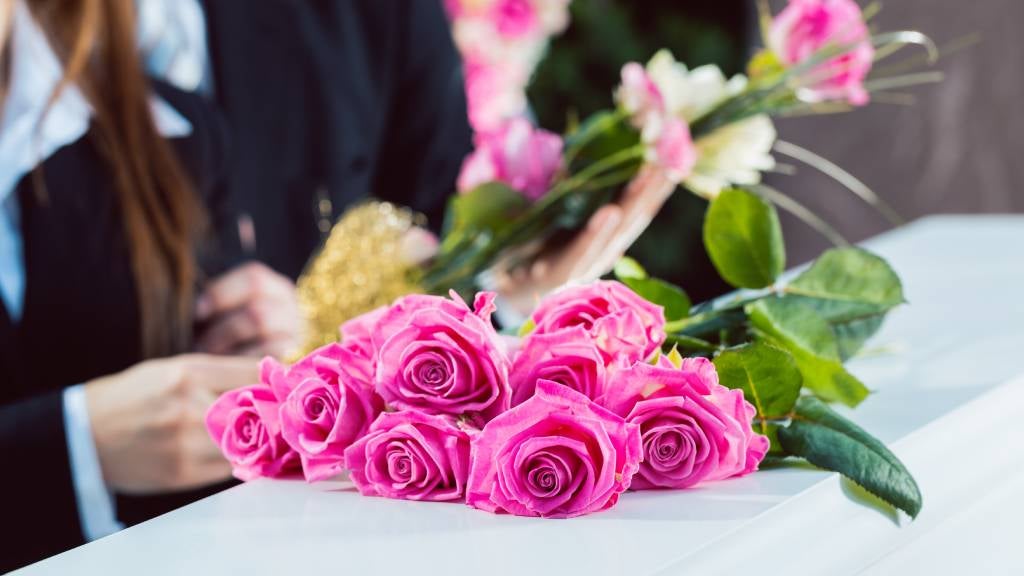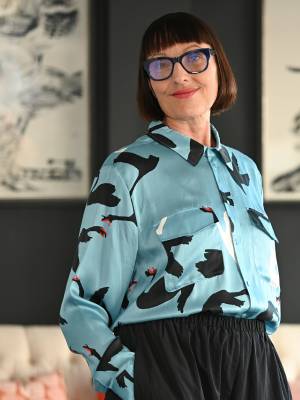The future of funerals – as predicted by a funeral director

In recent years, there has been a dramatic shift in how we think about funerals. Instead of following traditional services, more people are now choosing funeral practices that align with their personal values and beliefs.
We spoke to Victoria Spence, Holistic Funeral Director at Life Rites, about how funerals have changed over time and emerging trends we may see more of in the future.
“The community response to talking about death has changed radically. People are curious, engaged and willing. They are bringing their own personal style and creativity to their choices of where and how the funeral is arranged,” Victoria says.
The changing face of Australian funerals
According to Victoria, people today are speaking more openly about death and dying than ever before.
“We call this death literacy, and over the last decade or more, death really has become a vital and engaging topic of conversation,” she says.
When it comes to funerals, Australians are looking for a more personalised approach that truly celebrates the life the person has lived – whether for themselves or a loved one.
“Generally, people are less prepared to settle for a one-size-fits-all approach to their funeral,” Victoria says.
Nowadays, many people are opting for a small and simple funeral or direct cremation, before holding a larger memorial in a community location such as their own backyard, local club, or community hall.
Victoria explained: “This gives people more time to plan the ceremony and more choice as to where and how they invest their time, energy, and money.”
Emerging trends in the funeral industry
Rise of green funerals
As interest in sustainability grows, almost three-quarters of Aussies say they want to make a difference to the environment, even after death. This has led to the rise of green funerals which take place without a casket or embalming fluids that are harmful to the environment.
Victoria explains that people are making sustainable choices in every aspect of their funeral – from clothing and coffin choice to the type of burial. For example, the body can be dressed in biodegradable clothing and buried in an eco-friendly coffin or covering, or where the grave will be marked only by a tree or some other natural element.
Some cemeteries in Australia have now opened up natural burial sites for green funerals.
Interactive headstones
Traditional headstones are being transformed through technology into a new way of remembering loved ones. A QR code on the headstone opens up a webpage dedicated to the person who has died, showing their profile and bio, pictures, videos and tributes from family and friends.
This also provides visitors to the cemetery with the opportunity to learn about the people who are buried there, instead of information being limited to a name, date of birth and death.
Human composting
One of the most revolutionary new funeral trends is the emergence of human composting, also known as terramation, which has gained a strong following in USA and is currently legal in six states. While not yet legal in Australia, a group of young people have advocated for it in Victorian Youth Parliament.
Human composting uses a specific method for fast decomposition to turn human remains into soil, which family members can take home and use for fertilising plants, rather than releasing carbon emissions through a regular cremation.
This emerging trend is a direct result of people embracing sustainability in every facet of their life, as Victoria says: “Caring for your person’s body after they have died with natural and not chemical substances is increasingly important for people.”
Memorial ceremony
Victoria explains that memorial ceremonies are also on the rise.
“A funeral is where the body of the person is present in their coffin, whereas a memorial ceremony is where the person's body has already been buried or cremated.”
People are increasingly holding a small, simple funeral or a direct cremation and then investing their time, money and creativity in a larger memorial at a later date in a community location.
“This gives people more time to plan the ceremony and more choice as to where and how they invest their time, energy and money,” Victoria adds.
Most funeral homes also offer an interactive platform where remote participants can share memories, photos and videos of the person who has died.
Cremation as an eco-friendly option
The scales have tipped towards cremation over burials, with the cremation rate in NSW at 60%. While cremating a body generates more carbon dioxide than burying one, its overall impact on the environment is lower – as it doesn’t require maintenance of grounds, use of land, and embalming fluids seeping into the earth.
“People are becoming open to even more eco-friendly types of cremation, including the increasingly popular option of aquamation, which uses water to accelerate the natural decomposition process,” Victoria shares.
Sustainability in the funeral industry
“An eco-friendly funeral is one that considers issues of sustainability as a key element in the decision making,” Victoria says.
“More people are choosing sustainably produced coffins, such as ones made from a natural material like wicker, bamboo, willow, or cardboard, with a biodegradable lining, and use no nails or glues,” Victoria continues, “Some people are opting for no coffin at all – shrouded burials are an environmentally-friendly option.”
Victoria has also observed that people are burying their loved ones in natural fibre clothing and caring for their body with natural substances instead of chemicals.
How to plan your own funeral
Research shows that Australians today are more interested in curating and personalising their funeral – coming up with their own unique funeral ideas. If you’re one of them, Victoria recommends starting with what you feel is most important to include.
“Many people begin with what music they would like played, whether they have a choice of coffin or flower, even special food they would like served at the wake,” she says.
If you aren’t sure what you want, Victoria suggests ruling out what you don’t want – for example, an expensive coffin or tombstone.
For those looking to engage in more open conversations about death and dying, Victoria encourages people to seek out available resources.
“Death literacy is a thing! It’s a movement that has many entry points and is committed to de-mystifying death and dying and what takes place once people have died,” Victoria says.
“You can see this in death cafes, and holistic and community funeral homes that regularly have open days to discuss all things death and dying and funeral related,” she adds.
Victoria also points to initiatives such as the Groundswell Project, an organisation that runs educational workshops around dying, caring and grieving, and Dying to Know Day, an annual campaign that empowers Australians to confidently plan for their end of life.
End of life planning
When planning for your own funeral, it’s important to be financially prepared as well. Funerals involve a number of different costs – including the funeral home, coffin, transport, flowers, cremation or burial plot, death certificate, and venue for the wake – and these can quickly add up. If you want to save your family the stress of organising funds during an already stressful time, you might want to consider funeral insurance, which can alleviate your family’s financial stress so they can celebrate your life, while grieving your loss.
19 Apr 2024

Victoria Spence
Founder and Director of Life Rites
Victoria Spence is a funeral director, celebrant, consultant, facilitator and an end-of-life doula, and counsellor. She specialises in contemporary rites of passage, integrating end-of-life and after death care. She has a theatre and philosophy background and two decades in the cultural industries, as well as a Masters in Death, Dying and Palliative Care as well as training in mind-body somatic modalities. Victoria unique experience spans 35 years, and she takes a holistic, hands-on approach to helping people honour their dead, while supporting healthy grieving.